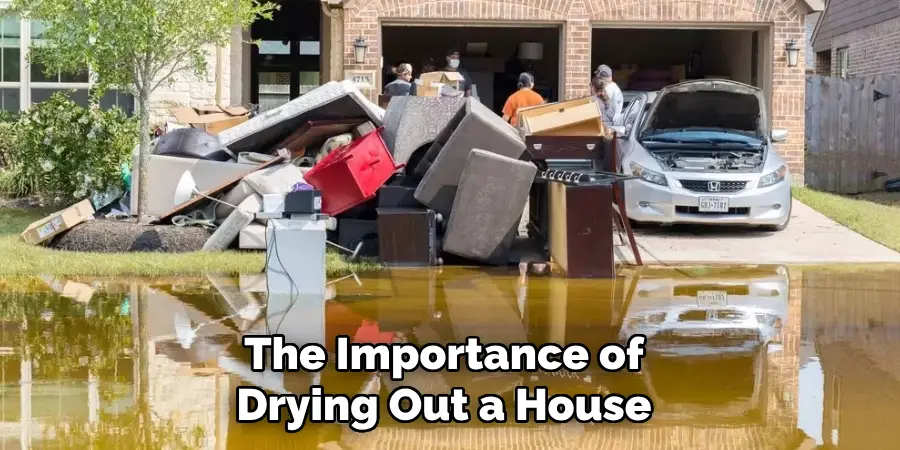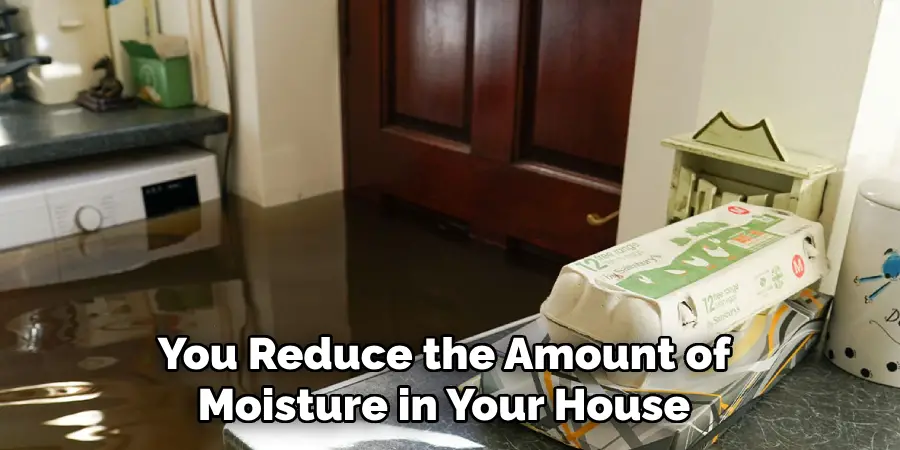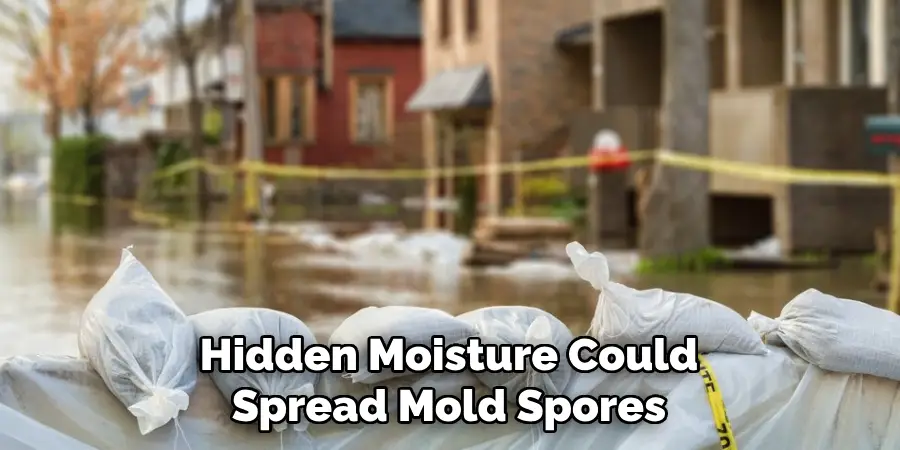When dealing with water damage in a home, it is crucial to act swiftly to mitigate potential structural issues and mold growth. Whether the water intrusion is due to a natural disaster like a flood or a more localized event such as a burst pipe, understanding how to effectively dry out your home is essential.

This guide on how to dry out a house will provide you with step-by-step instructions and tips to efficiently remove moisture from your living space, ensuring the safety and longevity of your house. By following these strategies, you can restore your home’s comfort and prevent further damage.
Why Drying out a House is Important?
Before diving into the steps for drying out your home, it’s important to understand why this process is crucial. Excess moisture in a house can lead to various issues and damage, including:
Weakening of the Structure:
Sustained exposure to water can weaken the foundation and structural elements of a house, compromising its stability. This can result in costly repairs and even pose safety hazards for occupants.
Mold Growth:
Mold thrives in damp environments, and a house with excess moisture is a breeding ground for mold spores. Exposure to mold can cause respiratory issues and aggravate allergies, making it essential to remove excess moisture from your home promptly.
Pest Infestations:
Moisture attracts pests like termites, cockroaches, and ants that can damage the structure of your home and create unsanitary living conditions. These pests are attracted to moist wood, so drying out your house can prevent infestations.

Now that you understand the importance of drying out a house let’s dive into the steps you can take to effectively remove moisture from your home.
8 Simple Methods on How to Dry Out a House
Method 1: Turn off the Water Source
The first crucial step in drying out your house is to identify and turn off the water source. If the moisture is due to a burst pipe or a similar issue, locate and shut off the main water valve to your home immediately to prevent further water intrusion. For leaks that are more localized, such as a toilet or sink, turn off the specific valve supplying water to the affected fixture.
Cutting off the source of water is vital as it halts the ongoing damage, allowing you to focus on drying out the existing moisture without the challenge of continuous water flow. Additionally, addressing the root cause will prevent recurrence and help maintain the integrity of your home’s structure.
Method 2: Remove Standing Water
If your house has standing water, whether from a flood or a leak, it’s essential to remove it immediately. You can use a wet vacuum, sump pump, or even towels and buckets to extract the water. Be sure to wear protective gear like gloves and boots as the water may contain contaminants.
Removing standing water is vital in preventing further damage and mold growth as it reduces the amount of moisture in your home.
Method 3: Increase Air Circulation
Proper air circulation is crucial for effectively drying out a house. Open windows and doors to allow fresh air to flow into your home. Set up fans strategically around the affected areas to circulate the air and minimize moisture. You can also use a dehumidifier to extract excess humidity from the air, speeding up the drying process.
The key is to increase airflow and ventilation to prevent stagnant, humid air from prolonging the drying process and promoting mold growth.
Method 4: Remove Damaged Materials
Any materials in your home that have been damaged by water should be removed and disposed of properly. These may include carpets, furniture, drywall, insulation, and other porous items that absorb moisture.
By eliminating these wet materials, you reduce the amount of moisture in your house and prevent potential hazards such as mold growth or structural damage.

Method 5: Scrub Mold Growth
If you notice any visible mold growth on surfaces like walls or floors, it’s important to scrub it off immediately. Wear protective gear such as a mask and gloves, and use a mixture of water and mild detergent to clean the affected area thoroughly.
Make sure to dry the area completely after cleaning and dispose of any rags or sponges used in the process. It’s crucial to address mold growth promptly as it can spread quickly and cause health issues.
Method 6: Inspect for Hidden Moisture
In addition to visible signs of moisture, it’s essential to inspect your home for hidden areas that may still have excess moisture. This includes checking crawl spaces, attics, and behind walls. Use tools like a moisture meter or infrared camera to identify these areas accurately.
Addressing hidden moisture is crucial in preventing long-term damage and mold growth, as it may not be immediately evident but can cause significant issues if left untreated.
Method 7: Use Desiccants
Desiccants are materials that absorb moisture from the air, making them useful in drying out a house. You can use commercially available desiccant products or make your own using materials like silica gel, cat litter, or rice.
Place these desiccants in areas with high humidity to help reduce excess moisture in the air. Remember to replace or recharge them regularly for maximum effectiveness.
Method 8: Call Professionals for Extensive Damage
If the water damage is severe or widespread, it’s essential to call professionals who specialize in water damage restoration. They have the equipment and expertise to effectively dry out your house and prevent further damage.
Additionally, professionals can also address any structural issues, remove mold growth, and ensure that your home is safe to inhabit.
Following these methods on how to dry out a house will help you effectively dry out your house and prevent potential issues caused by excess moisture. Remember to act quickly, wear protective gear, and seek professional assistance if needed. Your home’s structural integrity and the health of its occupants are dependent on a prompt and thorough drying process.
So don’t delay in taking these steps to ensure a safe and healthy living environment for yourself and your loved ones. Keep your home dry and enjoy peace of mind!
Do You Need to Use Professional Support?
Determining whether to enlist professional support in drying out your home can depend on the severity and extent of the water damage. If faced with mild issues, such as a small localized leak, homeowners can typically manage the situation with the basic tools and methods outlined previously. However, when dealing with more extensive complications, such as widespread water intrusion from flooding, persistent mold growth, or damage affecting structural integrity, professional intervention becomes necessary.

Water damage professionals possess specialized equipment, like industrial-grade dehumidifiers and air movers, and have the expertise to assess hidden moisture and thoroughly address mold and structural concerns. Additionally, their experience ensures quicker and more effective resolution, minimizing potential health risks and preventing long-term damage.
Hence, if you are uncertain about the extent of the damage or feel overwhelmed by the task, consulting with professionals is the safest course of action to ensure your home is restored to a healthy and secure state.
Frequently Asked Questions
Q: How Long Does It Take to Dry Out a House?
A: The time it takes to dry out a house can vary depending on the severity of the water damage, the size of the affected area, and the methods used. In general, it may take anywhere from a few days to several weeks to fully dry out a house.
Q: Can I Stay in My House During the Drying Process?
A: In most cases, it is safe to stay in your home during the drying process. However, if there are health concerns such as mold growth or extensive structural damage, it may be best to find alternate accommodations until the issue is resolved.
Q: How Do I Know If There Is Hidden Moisture in My Home?
A: The best way to detect hidden moisture is by using specialized tools like moisture meters or infrared cameras. You can also look for signs of water damage, such as soft spots on walls or ceilings and musty odors. If you are unsure, it is best to consult with a professional.
Q: Can I Use a Fan to Dry Out My House?
A: While fans can help increase airflow and ventilation, they may not be effective in drying out a house on their own. It is important to use specialized equipment like dehumidifiers and air movers for more significant water damage situations. Additionally, using fans in areas with hidden moisture could spread mold spores and cause further damage.

Conclusion
Excess moisture in a house can lead to various issues, from weakening the structure to promoting mold growth. By following these simple methods on how to dry out a house, you can effectively remove excess moisture and restore the comfort of your home. Remember to act quickly and call professionals for extensive damage to ensure the safety and longevity of your house. The key is to address the root cause, remove damaged materials, and increase airflow and circulation. So don’t wait – take these steps today to keep your home dry and healthy!

